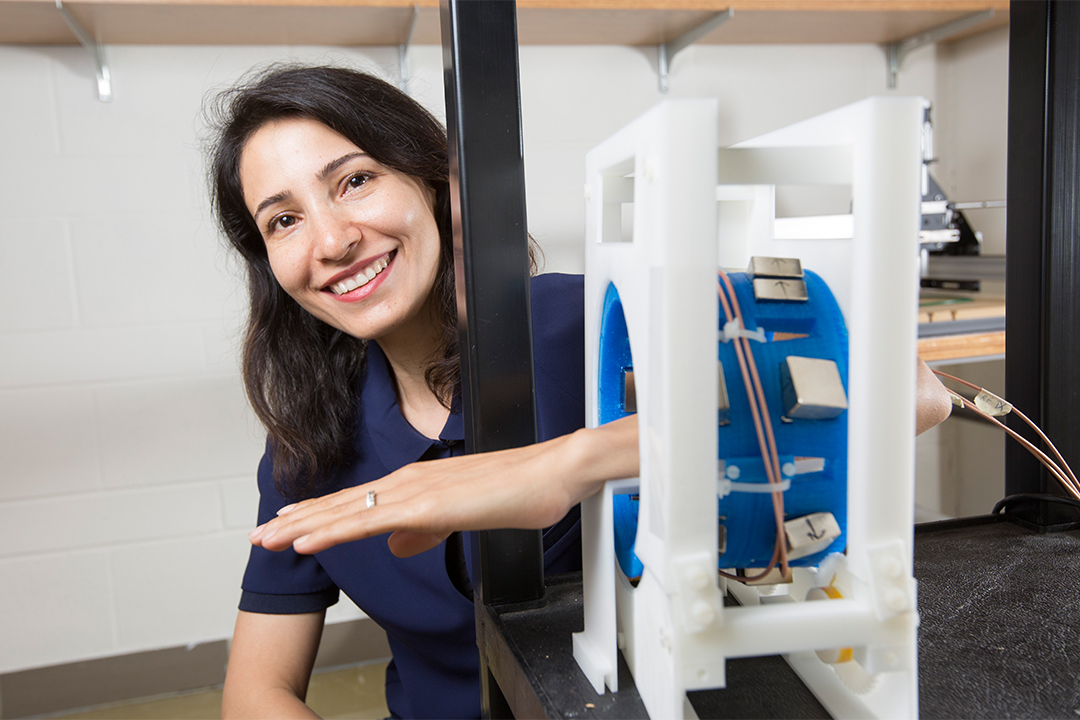
New software paves the way for portable MRIs
At one time, portable medical scanning devices existed only in Star Trek’s sick bays.
By Federica GiannelliBut Somaie Salajeghe has designed and written new software for a prototype of a silent, portable MRI that can make medical imaging more accessible, especially in northern communities.
“A portable MRI will have a large impact in the world,” said Salajeghe, a recent University of Saskatchewan PhD graduate in biomedical engineering. “The price for MRI exams is high. There are roughly two-month waiting lists in Saskatoon. In some parts of the world it’s too expensive to even have MRIs.”
A portable MRI could reach people in rural or remote areas with little access to medical imaging, and be used in ambulances, dental clinics and operating and emergency rooms, she said.
“I anticipate that a portable MRI will be used for more diagnoses than MRI is now,” said Gordon Sarty, a U of S biomedical engineering professor and one of Salajeghe’s supervisors. “For example, instead of looking at broken bones with X-rays, we could use MRI without worrying about radiation.”
Unlike potentially harmful radiation-based X-ray and CT scans, MRI (magnetic resonance imaging) devices use radio transmitters and magnets to generate radio signals that a computer with the right software can reconstruct into images of patients’ organs and tissues.
Unlike the large and expensive MRIs used in hospitals, Sarty’s portable MRI designs use radio transmitters with a simple design, which makes them operationally flexible, but also cheaper and easier to produce. Also, the new device is silent — it will not use noisy ‘gradient’ coils for scanning like current MRIs.
For the new MRI to function with this different coil design, Salajeghe said she had to develop a new state-of-the-art software for image encoding and reconstruction.
Co-supervised by medical imaging professor Paul Babyn, Salajeghe has been testing her software in a small wrist-size, two-kilogram MRI.
Salajeghe has shown mathematically that the new software works and has obtained images from signals generated by the MRI prototype.
“Their quality is still not there yet,” Salajeghe said. “But we are very close.”
Funded by the federal agency NSERC, Sarty and Salajeghe are now working with hardware company LT Imaging to obtain sharp, two-dimensional images. If all goes well with the research, Sarty hopes to develop and commercialize a head-sized version within four or five years.
Like a real version of Star Trek medical scanners, the portable MRI could also go into space. It would help researchers understand what happens to astronauts’ bodies while they are in space, instead of only monitoring changes in their bones and muscles before and after their missions.
Three years ago, under contract with the Canadian Space Agency, Sarty designed another wrist-size MRI for the International Space Station in partnership with Com Dev International and MRI Tech. The competition for the build phase was tough, and the space agency chose to build two other scientific instruments instead of Sarty’s MRI.
With the renewed federal interest in the Canadian Space Agency, Sarty hopes he will build and fly his MRI into space in the next decade.
Federica Giannelli is a graduate student intern in the U of S research profile and impact unit.
This article first ran as part of the 2016 Young Innovators series, an initiative of the U of S Research Profile and Impact office in partnership with the Saskatoon StarPhoenix.

